
If you want to equally share all profits and losses with a partner then use a 50-50 partnership agreement to outline the terms and responsibilities of each partner.
Create a Document in 3 Easy Steps
Get Started Choose Your Form TypeUpdated July 2, 2023
Written by Josh Sainsbury | Reviewed by Brooke Davis
A 50/50 Partnership Agreement is a document that establishes a business relationship where two partners share equal responsibilities, decision-making power, and profits or losses, used to clarify roles and prevent disputes in the future.
If you decide to go into business with an equal partner, it can be even more daunting because each partner is an owner with rights. A written agreement beforehand can help everybody involved understand their obligations and responsibilities.
A good 50/50 business partnership agreement template can help you prepare a contract that you can rely on and be confident will protect every partner’s interest in the business.
A 50/50 partnership is an agreement between two or more individuals to operate a business jointly. The partners equally share the costs, profits, risks, and liabilities. The partners also share the responsibilities equally and have equal decision-making power.
Unless the agreement specifies otherwise, any single partner can bind the business to a contract with a third party without the consent or even the knowledge of the other partner.
If two individuals know each other well and trust the ability and judgment of one another, a 50/50 partnership agreement can be a simple, powerful form of organization that will enable both to build a thriving business.
The partners must constantly stay in touch with one another to ensure that their understanding of the goals and strategy of the company remains unified.
Making a 50-50 partnership agreement is easy if you use the 50-50 partnership agreement template and follow the steps listed below:
a) List the state where the partnership will do business or have its principal office, the date of the agreement, and the names and mailing addresses of each partner joining the agreement.

a) Give the name of the partner organization in total. Check with your state to make sure the name you want to use is available. Check to make sure the business name doesn’t infringe on any trademark.
If you aren’t starting operations immediately, you may want to reserve the business name by filing with the state.
b) Describe your business’ purpose and the business activities the partnership will pursue.
c) List the physical address where the partnership will do business and use it for state registration. Don’t list only a PO Box. A fully online business could use a personal address.
d) List the date that the partnership goes into effect. You could also agree that the partnership will end upon certain conditions described later in the agreement or go on indefinitely.
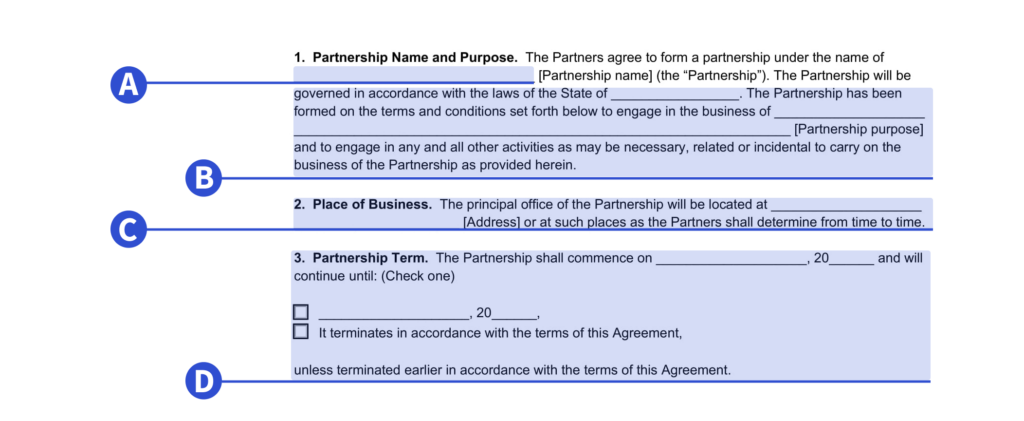
a) List the partners’ capital contributions. You might list a deadline for receiving contributions.
b) List the contributions that each partner will invest in. Investments are usually made equally, but the assets could be cash, property, labor, or expertise.
Each contribution, of whatever kind, in a 50/50 partnership agreement will give the partner an equal share of the profits and the decision-making roles.

a) Capital accounts may or may not pay interest, depending on your business’s needs, goals, and operations. In a 50-50 partnership agreement, each partner should receive equal treatment if capital accounts pay interest.
b) Profits and losses should be dealt with in the agreement. In a 50-50 partnership agreement, each partner should receive equal shares of profit and allocation of loss.
c) Each partner has an income account, where the share of profit and loss is credited or debited. It would be best if you also decided whether the income accounts will pay interest to the partners.
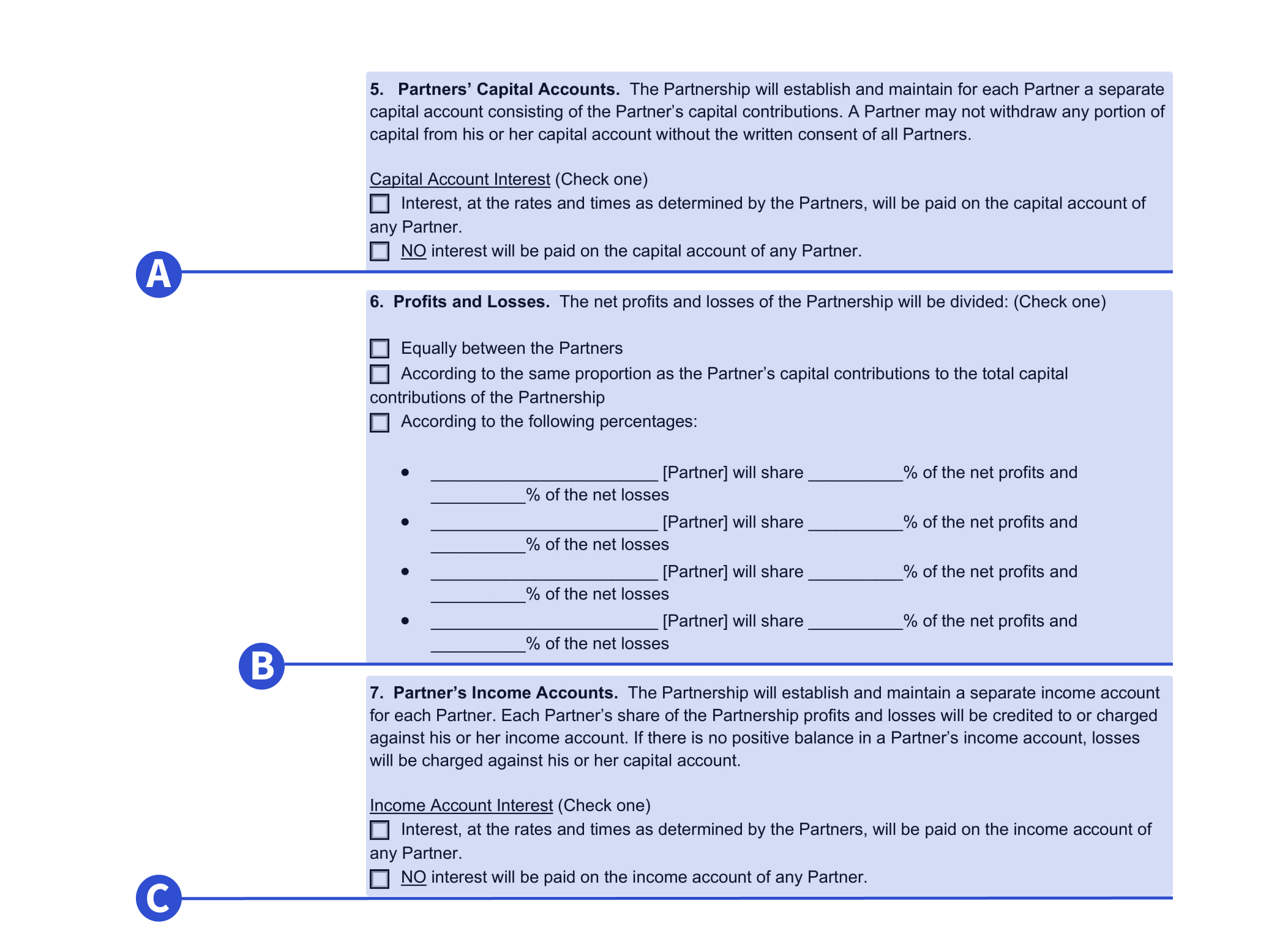
a) Decide whether the partners will have a salary. The IRS considers partners to be employees only if they provide services other than their capacity as a partner. This determination can determine how both the partners and the partnership are taxed.
b) If no salary is provided to any partner, then choose this option.
c) Decide how partners can withdraw profits from income accounts. Withdrawals could be anytime, periodic (monthly, quarterly, biannually, or annually), or may require the other partner’s consent to withdraw.
d) List the financial institution that will hold the partnership account. List who can withdraw and sign on behalf of the partnership on this account. In a 50/50 partnership, traditionally, all partners have access to the partnership assets.
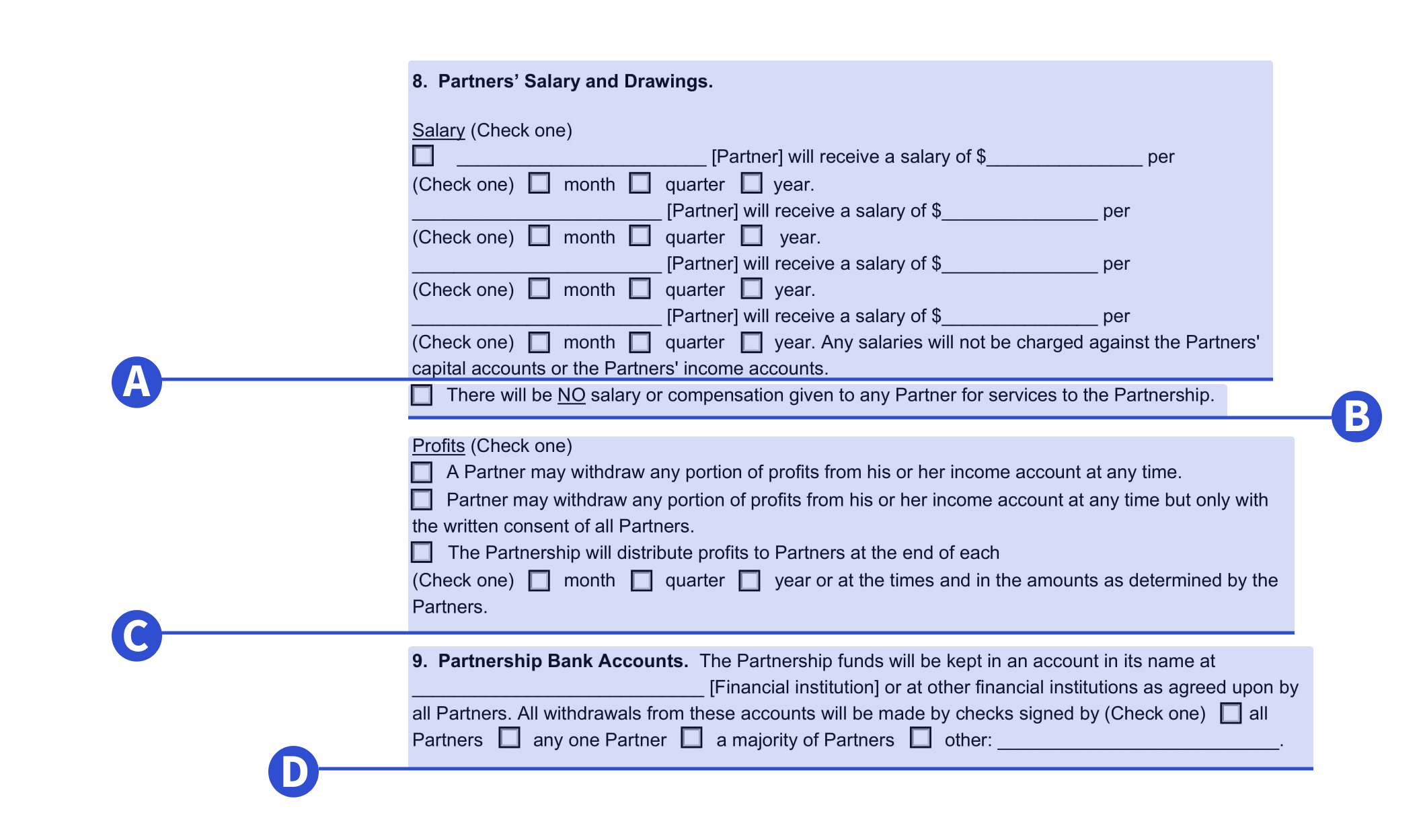 salary and drawings and partnership bank account information in our 50-50 template." width="2113" height="1249" />
salary and drawings and partnership bank account information in our 50-50 template." width="2113" height="1249" />
a) List the address where the partnership books and records will be kept. This might be the business location or with the partnership’s accountant or lawyer.
b) List who can inspect books and records and when. Each partner should have equal rights to examine the books and records, but you can specify other individuals acting on behalf of the partner as well.
c) Most businesses follow a calendar year, but state if the partnership follows a fiscal year.
d) List the date that profit and loss statements and the balance sheet will be prepared. This can be any date but usually happens within a couple of months after the end of the year. Be aware of state and federal tax and reporting deadlines in selecting the date.

a) In a 50/50 business partnership, partners usually have equal authority to decide on the collaboration or bind it to contracts.
This can sometimes create confusion and strife in a partnership. If you want to limit this authority, you can describe which decisions are shared equally and which require the partners’ consent.
b) The partnership can be dissolved by unanimous consent or upon specific events. The business is usually wound up when a partnership dissolves, and the assets are liquidated or distributed. It might become a sole proprietorship if one partner buys out the other.
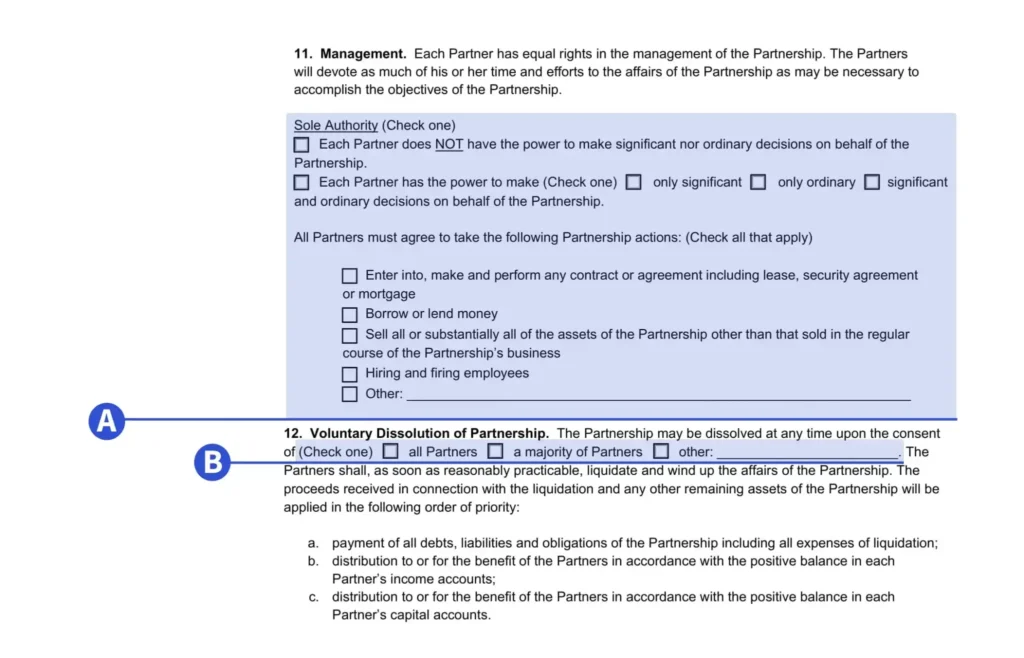
a) Decide when partners can leave the partnership, whether at any time, after a certain period, or only with the consent of the remaining partner or partners.
In a 50/50 partnership involving only two individuals, the withdrawal of one partner effectively ends the partnership. You may wish to consider how this will affect business operations.

b) Decide how the partnership will handle the death or retirement of one of the partners. If there are only two, the block must either wind up and distribute or be bought out and go on as a sole proprietorship.

c) Describe how any buyout price is to be calculated. This is the price the remaining partner will pay for the interest of the partner who leaves instead of ultimately winding up the business.

a) Describe the terms and conditions upon which new partners can be admitted to the partnership, if any.
b) In a 50/50 partnership, disagreement effectively means the paralysis of the business. The partners can decide to have their disputes mediated or arbitrated. Describe any dispute resolution terms here.

a) The partners or their representatives sign and print their full names.

A 50/50 partnership agreement can be vital for organizing a business start-up quickly and inexpensively. But any partnership agreement has some limitations, and a 50/50 split may not be for everyone.
Some advantages and disadvantages of a 50/50 partnership agreement are listed below and can help you decide if this form of organization is suitable for you.
If a partnership seems like the correct form of organization for your business, you can use our 50/50 partnership agreement template:
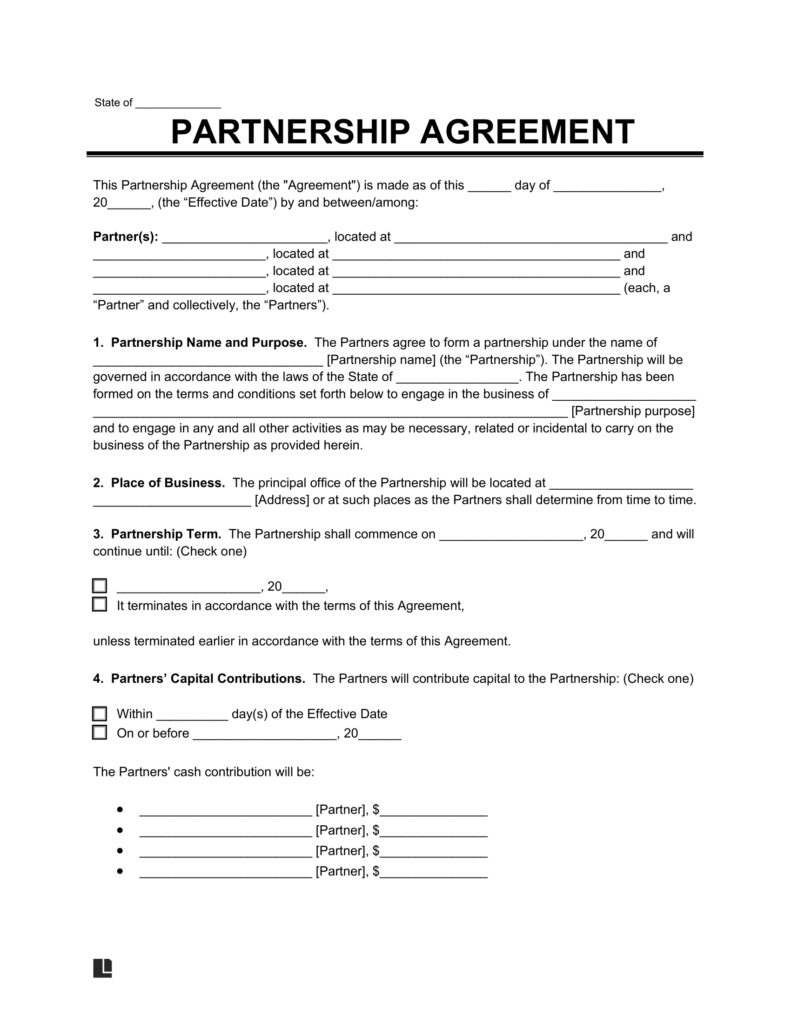
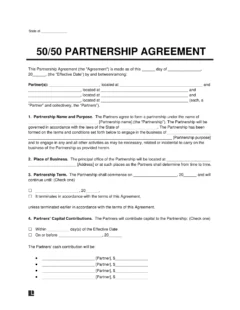
Start building your 50-50 partnership agreement today!